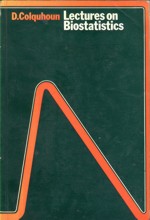The saga of the excommunication of this page, and its de-excommunication, is described here, and here, and here.
I am supposed to be on holiday, but the Red Lion in Grasmere has a wireless network, and this is just too good not to post at once. So, after a distinctly moist walk over Loughrigg Fell, and an excellent dinner, here goes.

Panorama from half way up Loughrigg Fell, with Grasmere on left and Rydal Water on write, taken just before the downpour started.
 Loughrigg Fell and Rydal Water on left. Grasmere Lake above and Grasmere village (right) with GPS track.
Loughrigg Fell and Rydal Water on left. Grasmere Lake above and Grasmere village (right) with GPS track.
The main trigger for the allegations of defamation seems to have been the fact that I said (and still say), apropos of Dr Ann Walker’s description of red clover, “What on earth is a “blood cleanser” or a “cleanser of the lymphatic system”. This is so much meaningless gobbledygook”.
This set me wondering about the origin of the term “blood cleanser”, and who better to ask than the erudite Micheal Quinion of the wonderful World Wide Words site. His weekly newsletter is invariably fascinating. And buy his books.
Michael Quinion has kindly given permission for me to reproduce his “non-definitive” investigation into the use of the term “blood cleanser”. It seems to have been a favourite of snake oil salesmen in thw 19th century. Of course, none of them defined what it means. You are just meant to know that it’s something good.
Quinion on “Blood Cleanser”“The exact phrase “blood cleanser” is known no later than the nineteenth century. The earliest I’ve found is from an advertisement in the Ohio Democrat for 30 June 1871 (it ran regularly from then on) “D.B. FAHRNEY’S Blood Cleanser or Panacea, for sale by Miller & O’Donnel, is becoming a popular family medicine.” There was also Prof. Chapins’ Blood Cleanser, advertised the following year. But the concept of cleansing the blood is very much older, of course. I have found another advertisement, in the Milwaukee Evening Courier of Wisconsin, dated 22 March 1847: “As a SPRING and FALL PURIFIER it cannot be surpassed, working its way through the system with a silent and effective force,–Cleansing the BLOOD; Removing DYSPEPTIC INFLUENCES; Variations on the phrase also occur several times in Culpeper’s Herbal (1653 edition) in the section on hops: “In cleansing the blood they help to cure the French diseases, and all manner of scabs, itch, and other breakings-out of the body; as also all tetters, ringworms, and spreading sores, the morphew and all discolouring of the skin.” Another example is: “The roots of this Bastard Rhubarb are used in opening and purging diet- #drinks, with other things, to open the liver, and to cleanse and cool the blood.” It also appears earlier still in The Anatomy of Melancholy by Richard Burton (1621): “And because the spleen and blood are often misaffected in melancholy, I may not omit endive, succory, dandelion, fumitory, &c., which cleanse the blood, Scolopendria, cuscuta, ceterache, mugwort, liverwort, ash, tamarisk, genist, maidenhair, &c., which must help and ease the spleen.” No doubt a more thorough search will turn up still earlier examples. (My sources are poor before the eighteenth century.)” |


[…] and ran a herbal practice from her house. It is her recommendation of red clover as a “blood cleanser” that is responsible for the picture of clover in the header of this […]
[…] UCL because I said that the term ‘blood cleanser’ is gobbledygook. The fact that the statement was obviously true didn’t deter them for a moment. The herbalists were bluffing no doubt, but they caused […]
[…] purifier? Detox? Where have we seen this sort of utter gobbledygook before? Or perhaps she can sell you some Guggul (Commiphora […]
[…] “Purify our blood”. Total meaningless bollocks. The words mean nothing at all. I’ve been here before. […]
[…] So what is a “blood cleanser”? Quinion speaks. […]
[…] for the Financial Times also made me remove a reference to “dishonest degrees” from a piece in their magazine, though I thought it was clear that it was the degree content that was dishonest, not the teachers. […]
[…] been through this before with Red Clover (see Michael Quinion’s .look at the term "blood cleanser"). Using words like them is the very opposite of […]